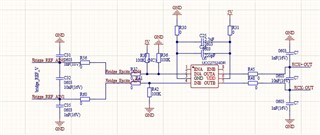Dear Support Team
We are implementing AC excitation with ADS1261 for full bridge sensor measurement and met some issues during development
1. In data Sheet 9.4.3,the AC-excitation mode changes the nominal data rate, I want to know whether the data rate changed by configuring AC excitation is the same as the data rate sampled by me,what's the relationship between sampling rate and AC-excitation frequency?
2.. When I set the data rate to 40KSPS, the frequency is 2.5KHz. I wonder if the AC excitation frequency can continue to increase (I use the internal clock). My design target is AC frequencye:5Khz / voltage 6V, sampling rate> 10k SPS
3. I noticed that when my configured data rate is higher than 7200SPS, I can only use digital filter 5. The data I collected is unstable. I want to know what methods can be used to improve the stability in hardware and software configuration.
4. on the hardware, pull up-> delay-> pull down-> collect data. is this delay time related to the size of the data I collected?



